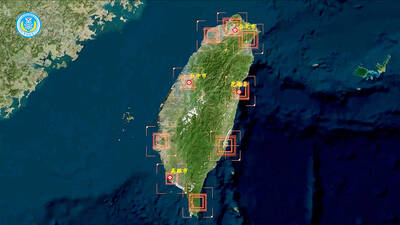Taipei music enthusiasts have something to look forward to as the ethereal sounds of Novo Amor are set to grace the city on March 7. Taking place at Legacy Taipei, the concert marks Novo Amor’s debut performance in Taiwan, promising an unforgettable evening of indie rock and folk melodies.
Fronted by Welsh singer-songwriter and multi-instrumentalist Ali John Meredith-Lacey, Novo Amor, which translates to “New Love” in Portuguese, is a name and persona he originally used to represent a re-emergence and new found love of music after a difficult breakup. His music embodies a captivating blend of emotive lyricism and atmospheric compositions. Lacey’s musical prowess has garnered international acclaim, captivating audiences worldwide with his soul-stirring performances, boasting over 9 million monthly listeners on Spotify.
Originally scheduled to perform in Taiwan in 2020, Novo Amor’s plans were thwarted by the global pandemic. Fans can expect an immersive journey through mountains and oceans, as Novo Amor’s music transcends boundaries and transports listeners to ethereal landscapes.

Photo courtesy of Dan Harris and Aline Brant
Novo Amor will be accompanied by a full band, enhancing the atmospheric quality of their music. Additionally, longtime collaborator Lowswimmer will join as a special guest, adding an extra layer of depth to the already mesmerizing performance.
The concert is brought to Taipei by Young Team Productions, a company dedicated to bringing diverse musical acts to the city. Known for their impeccable taste in booking talent, Young Team Productions has curated an impressive lineup of shows for March, including acts like The Walters and Parcels, promising an eclectic array of musical experiences for Taipei audiences.
Tickets for Novo Amor’s performance at Legacy Taipei are available now through KKTIX.com.

The People’s Republic of China (PRC) last week offered us a glimpse of the violence it plans against Taiwan, with two days of blockade drills conducted around the nation and live-fire exercises not far away in the East China Sea. The PRC said it had practiced hitting “simulated targets of key ports and energy facilities.” Taiwan confirmed on Thursday that PRC Coast Guard ships were directed by the its Eastern Theater Command, meaning that they are assumed to be military assets in a confrontation. Because of this, the number of assets available to the PRC navy is far, far bigger

The 1990s were a turbulent time for the Chinese Nationalist Party’s (KMT) patronage factions. For a look at how they formed, check out the March 2 “Deep Dives.” In the boom years of the 1980s and 1990s the factions amassed fortunes from corruption, access to the levers of local government and prime access to property. They also moved into industries like construction and the gravel business, devastating river ecosystems while the governments they controlled looked the other way. By this period, the factions had largely carved out geographical feifdoms in the local jurisdictions the national KMT restrained them to. For example,

The remains of this Japanese-era trail designed to protect the camphor industry make for a scenic day-hike, a fascinating overnight hike or a challenging multi-day adventure Maolin District (茂林) in Kaohsiung is well known for beautiful roadside scenery, waterfalls, the annual butterfly migration and indigenous culture. A lesser known but worthwhile destination here lies along the very top of the valley: the Liugui Security Path (六龜警備道). This relic of the Japanese era once isolated the Maolin valley from the outside world but now serves to draw tourists in. The path originally ran for about 50km, but not all of this trail is still easily walkable. The nicest section for a simple day hike is the heavily trafficked southern section above Maolin and Wanshan (萬山) villages. Remains of

Shunxian Temple (順賢宮) is luxurious. Massive, exquisitely ornamented, in pristine condition and yet varnished by the passing of time. General manager Huang Wen-jeng (黃文正) points to a ceiling in a little anteroom: a splendid painting of a tiger stares at us from above. Wherever you walk, his eyes seem riveted on you. “When you pray or when you tribute money, he is still there, looking at you,” he says. But the tiger isn’t threatening — indeed, it’s there to protect locals. Not that they may need it because Neimen District (內門) in Kaohsiung has a martial tradition dating back centuries. On